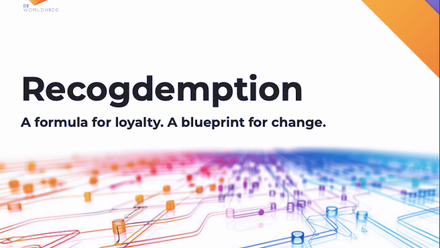How to measure employee engagement effectively and act on it to drive future benefits strategy

Measuring and analysing employee engagement
There are a number of different methods that can help us measure employee engagement. One-to-one sessions with employees, pulse surveys, annual surveys, and the employee Net Promoter Score can all provide a valuable picture of how engaged employees are in an organisation.
But what’s really key is analysing these results. Debbie Mitchell, employee engagement expert, explains the different approaches businesses can take to analysing and measuring employee engagement results.
“A people strategy must be a two-way approach. This suggests that to add value, the approach to analysing and actioning employee engagement survey results should be two-way. It is highly recommended that organisations take a blended approach to analysis that incorporates:
- strategy-led analysis – using business strategy and goals to drive the agenda and prioritisation of data
- value-led analysis – using established organisational values to drive the analysis agenda
- employee-led analysis – using feedback and perceptions to increase workforce satisfaction.”
Turning results into action
Whichever approach, or approaches, you might choose to measure and analyse employee engagement, the next step is to translate that knowledge into tangible actions. Any employee engagement survey is just a moment in time, so you need to be able to keep it relevant and up-to-date. When it comes to informing and developing a benefits strategy, consider the following five steps.
- Share your findings as soon as possible. If you don’t, employees might wonder if you have something to hide. Communicating early and openly will stop any stories circulating and help put minds at ease. Particularly when there might be concern that benefits could change or be removed.
- Check your interpretation of the findings. This could be with a cross-section of employees, for example a staff representation group. If you’re asking for feedback on benefits, be sure to discuss the reasons why employees are engaged or disengaged with them, and of course, suggestions for what you could do to drive interest in your offering.
- Involve employees beyond the point of feedback. With a clearer picture of your workforce’s benefit wants and needs, you can ensure that any changes to, or new, benefits will be truly relevant. This means your investment in benefits can improve, as employees will be more likely to make use of benefits that mean something to them.
- Connect your findings to key organisation issues. For example, if there is a problem with stress-related absence in your business, you might want to investigate usage of your employee assistance programme. Doing this can help you identify where you could improve engagement with benefits through better communication and signposting.
- Continue the conversation. Take regular temperature checks to find out what impact your actions are having. This could be informally through team briefings, or through company-wide pulse surveys. This will help ensure that your initiatives are moving engagement in the right direction.
For more on this topic, take a look at our guide to measuring employee engagement and driving business performance.
This article is provided by Simplyhealth.
Supplied by REBA Associate Member, Simplyhealth
Our health plans make it easy for people to maintain their health&wellbeing.







